Leaving the Marquesas Islands, we headed off on a 450nm (3 to 4 day) passage to the Tuamotus. We planned for a slower than usual sail in order to try to protect our fragile sails. Unfortunately, in spite of our efforts, we still arrived in the Tuamotus with another rip in the genoa. Aaaah!
The Tuamotus Archipelago is a chain of about 80 islands and atolls in French Polynesia. Most of them are coral ‘low islands’; little more than a high sand bar built on a coral reef. The atolls are ring shaped islands with a coral rim. These are created when a ring of coral builds up around an undersea volcano that has risen above the water’s surface. Long after the volcano has receded into the ocean, the atoll remains. Inside the ring, there is a lagoon, usually almost fully protected by the surrounding reef.
Ever since we had started planning our circumnavigation, the Tuamotus were my number one place to visit. I was so looking forward to our time here!
Sailing in the Tuamotus is not without its challenges. As the atolls are extremely low lying, careful navigation is crucial, especially at night. Many of the inner lagoons are not accessible, but several atolls have gaps in the reef. These passes allow entrance to the lagoons. However, the whole lagoon area is subject to tides and the water flowing in and out of the passes can reach up to 10 knots as it funnels through the narrow channels. Depending on the wind and tide direction, there can also be standing waves to watch out for. In strong winds, when against the tide, boats have been known to capsize or be swept onto the outlying reefs. In order to pass through comfortably, it is advisable to go through at slack water.
Our arrival point in the Tuamotus was Raroia. Being our first atoll, we were cautious about ensuring that we entered the pass with the ingoing tide. We were so cautious, we actually had a very early arrival and then spent three hours watching the water flowing out of the lagoon and monitoring the standing waves. While we were waiting, we saw a Catamaran on its way out. Watching it bounce through the standing waves, we knew that we had made the right decision to wait. We did wait a little longer, but then impatient to get in, we set off. It was ok, but we definitely would have been better waiting for another half hour.
We anchored off the ‘village’ of Ngarumaoa, took the dinghy ashore and we walked to the village. Village probably gives a false impression. It was actually a handful of houses, some derelict, set amongst the palm trees. Ngarumaoa has very limited connection to the outside world. There is a phone signal, but they have no data connection. There is a small airport which welcomes a weekly flight from Tahiti, but most supplies have to be shipped in. The supply ship comes in around once a month and is a big event in the village. Our arrival coincided with its monthly arrival, so the quayside was busy with locals collecting their goods. Even the village store was closed to restock from ship. A very apologetic owner asked us to return the next day, as he was busy unloading his pallets. Returning the next day, the owner proudly showed us the fresh produce – potatoes, apples, pears, cucumber and tomatoes which sat along side a collection of tins. No eggs this time though.
As we walked through the village, everyone we met was extremely welcoming and they were keen to chat to us. Some English is spoken here, but generally it is limited and any conversations were in our very basic French. Everyone we met was welcoming, friendly and interested in finding out about us and our travels.
After buying a few basics, we set off for the other side of the atoll. This was a short distance of only a few miles, but the passage was slow due to keeping watch for coral bommies on route. These large underwater formations are not always represented on our electronic navigation, so we also use goggle earth images to try and locate them. The final check is for me to stand watch on the front, keeping my eyes peeled for the lighter coloured water which indicates the shallower patches.
The effort was well worth it though, as we were the only boat in this quiet anchorage. We spent a few days here catching up on boat jobs: more sail mending, maintenance and washing!
While in Raroia, Martin was invited to go fishing. He spent several hours on a small fishing boat, learning about a very novel fishing technique. This consisted of wrapping fishing line around a flat rock whilst trapping bits of bait. The rock was then lowered into a good spot along with a baited hook on a separate line. One of the locals lay in the boat with his head over the side and when he saw plenty of inquisitive fish, he pulled the rock line to release the bait. The hope was that while the fish are eating the lose bait, one would go for the bait on the hook. It was an interesting idea, but it was not very successful. Luckily, Martin had a more conventional line and came back with one fish. We were not sure what it was, but it was certainly tasty.
Our next atoll was Makemo. On this occasion, we timed our arrival perfectly for the ingoing tide and we entered the lagoon on completely calm seas.
Once again, our first anchorage was outside the village. Pouheva was bigger than Ngarumaoa. This village had two school, a post office and two small supermarkets with a good supply of fresh bread. Still no eggs!
After a couple of days, we headed north through the lagoon and dropped the anchor in an isolated anchorage alongside the northwest pass. The water was crystal clear and we could easily see the sandy bottom, strewn with tall columns on volcanic rock. It was a beautiful place to snorkel, but not ideal for anchoring. We needed to float the anchor chain to help keep it from tangling around the bommies. Unfortunately, even this did not stop the problems and, when the time came to lift the anchor, Martin ended up in water shouting directions to me to maneovre the boat to untangle the chain.
We made the most of our time here, snorkelling the pass and mending the shroud.
Atoll three was Fakarava. This is one of the larger atolls and more popular with the tourists. Our time here was split between the quiet anchorage at Hirifa with its long sandy beach and shallow water, the south pass with its gigantic napoleon wrasse and famous ‘wall of sharks’ and the northern village of Rotaova with fresh baguettes, EGGS and eating out for the first time in several weeks. Bliss!
The diving here was spectacular with more fish than we have ever seen before! Check out the video…
Our final atoll was the much smaller and less visited Toau. We had been recommended Anse Amyott, a ‘false’ pass at the northern end. This looks like a pass into the lagoon, but access is blocked by a large reef. The space is limited here and we picked up one of the twelve mooring buoys. Anse Amyott is home to Gaston and Valentine who, not only manage the moorings, but will also put on a feast for the boats in the bay. When we were there, it was a truly international gathering with people from Italy, Brazil and France. Gaston had been out early to catch the lobster and fish and Valentine had prepared it all. We were treated to a wonderful spread of lobster, tuna and parrotfish with rice, salad and coconut bread. Dessert was homemade coconut cake. It was just like sitting around with the family for a Sunday lunch. We would definitely recommend a stop here.
All too soon our time in the Tuamotus came to an end. We had been fortunate to be able to spend over three weeks here. This extended time had enabled us to really experience local life rather than rush through. It was a superb place full of wonderful people and I was sad to leave.
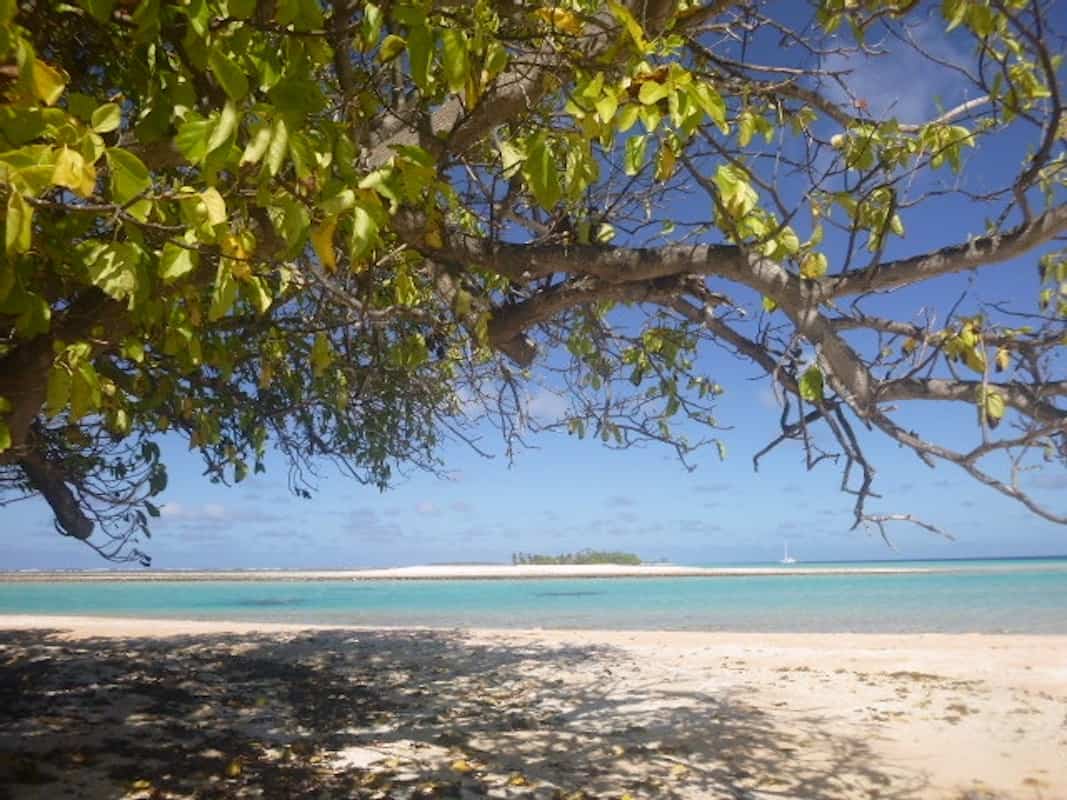
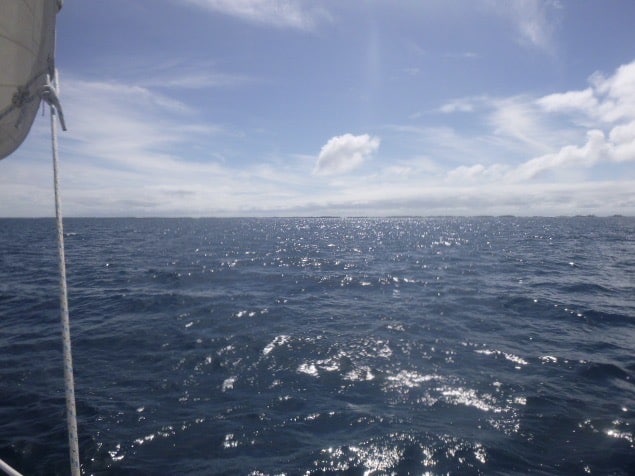

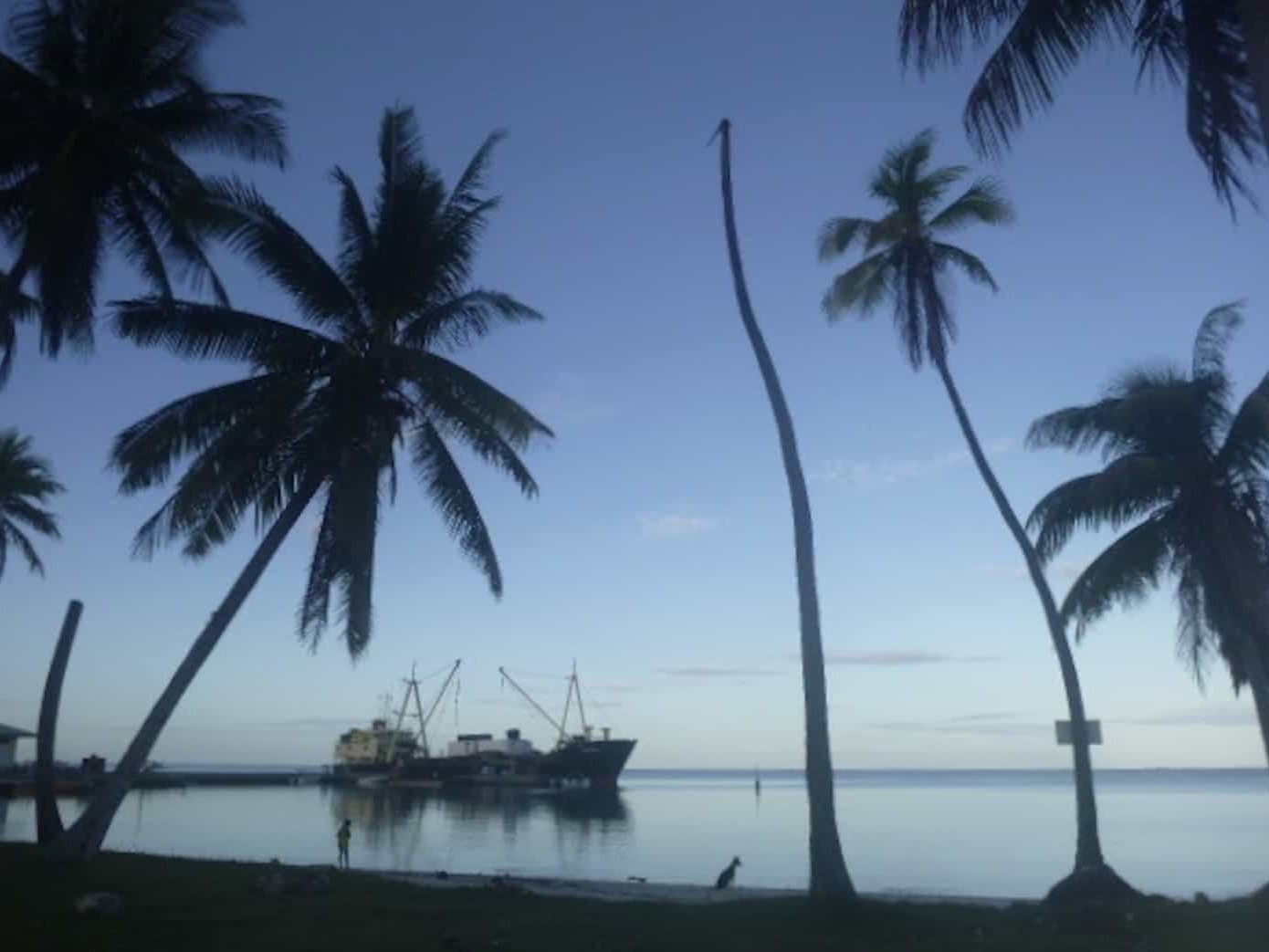


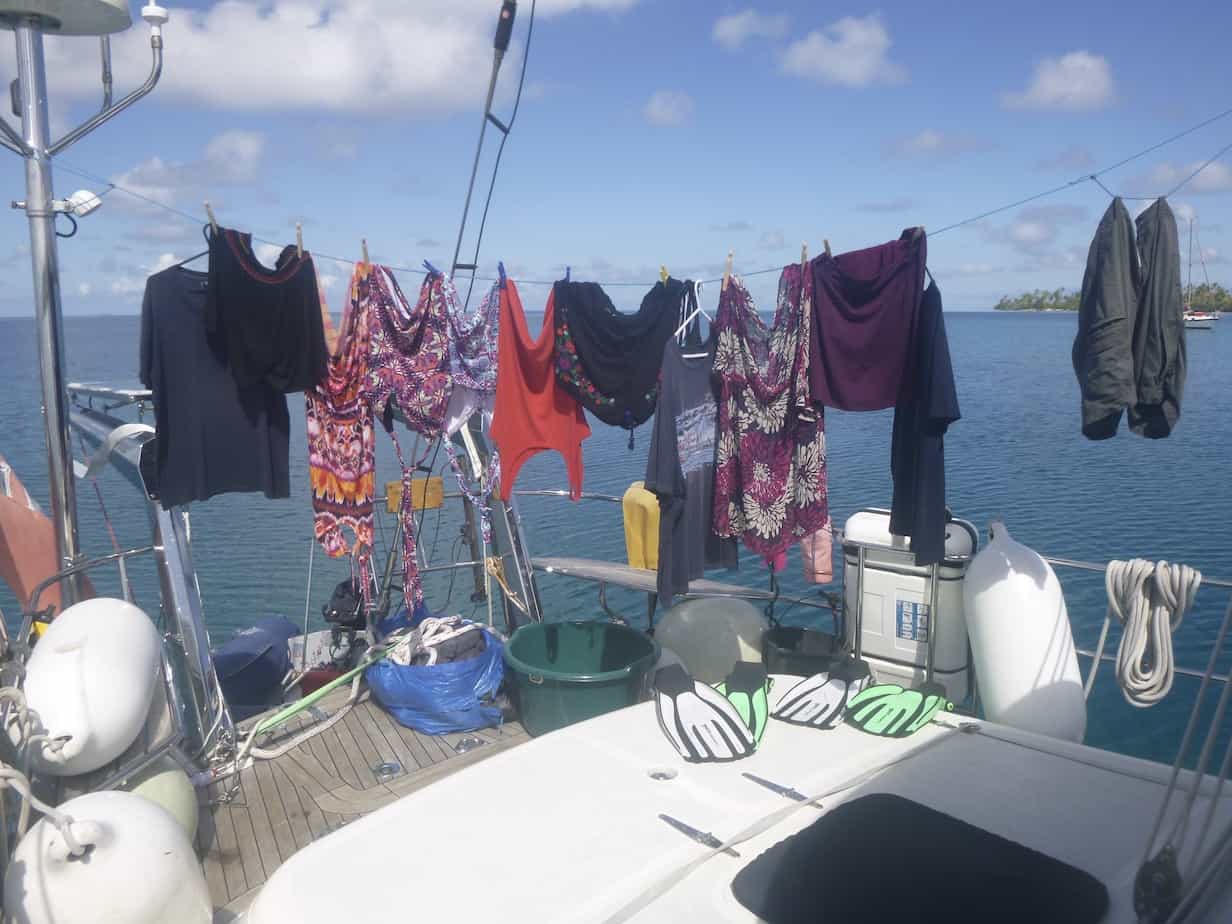
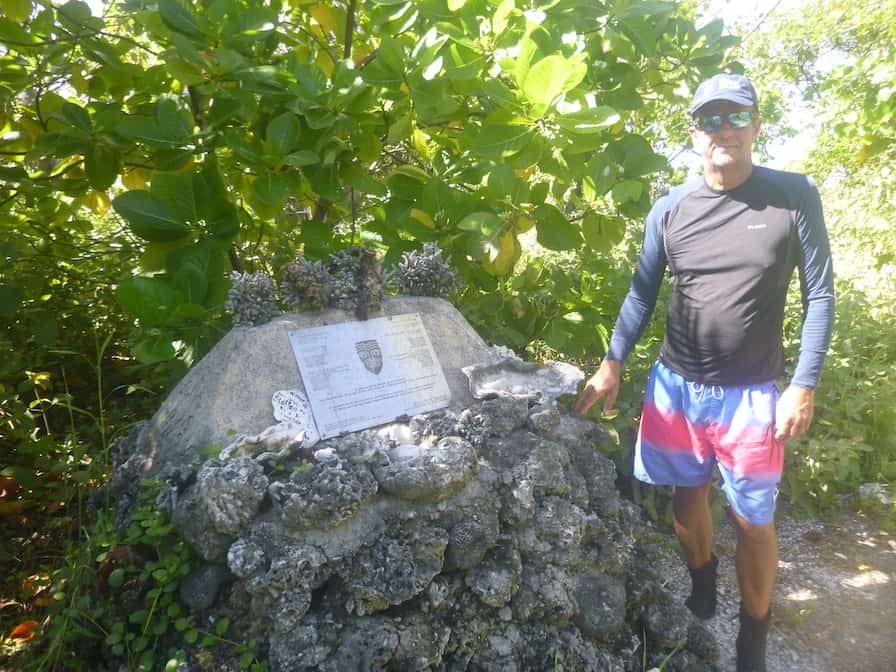
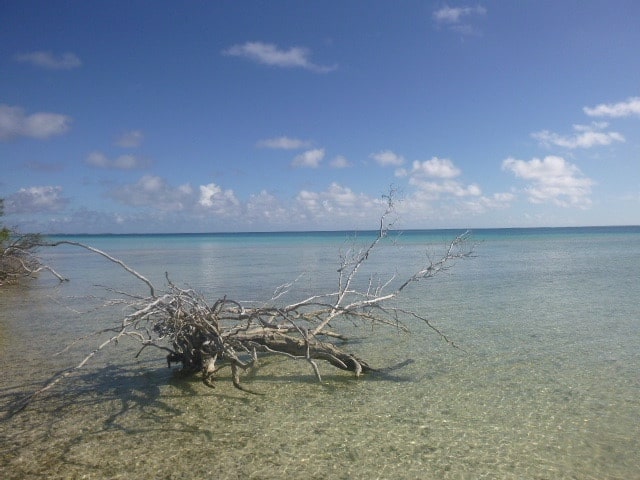


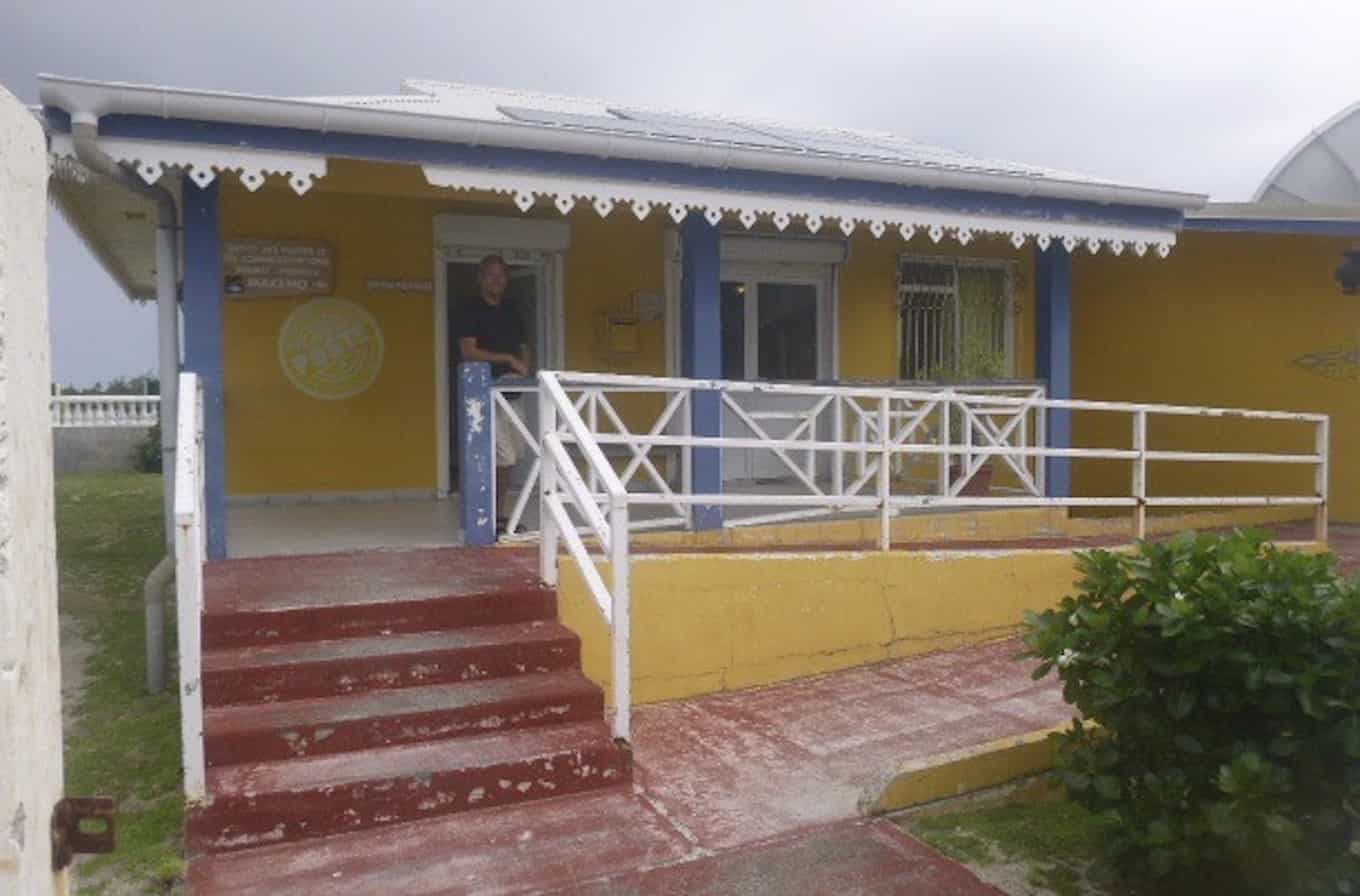
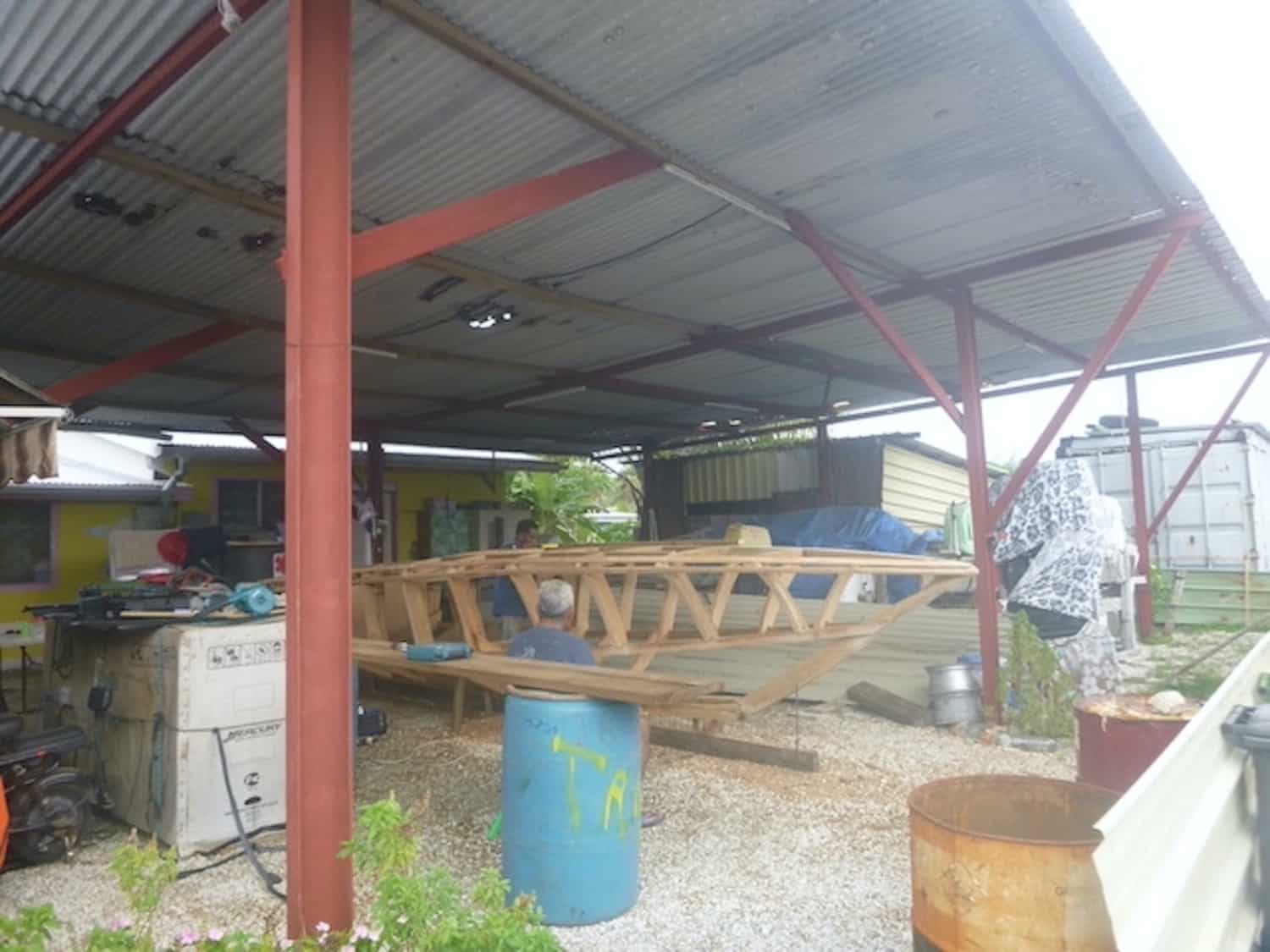


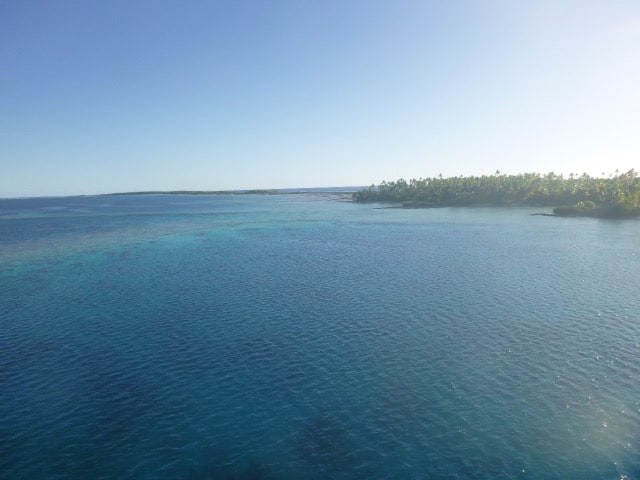


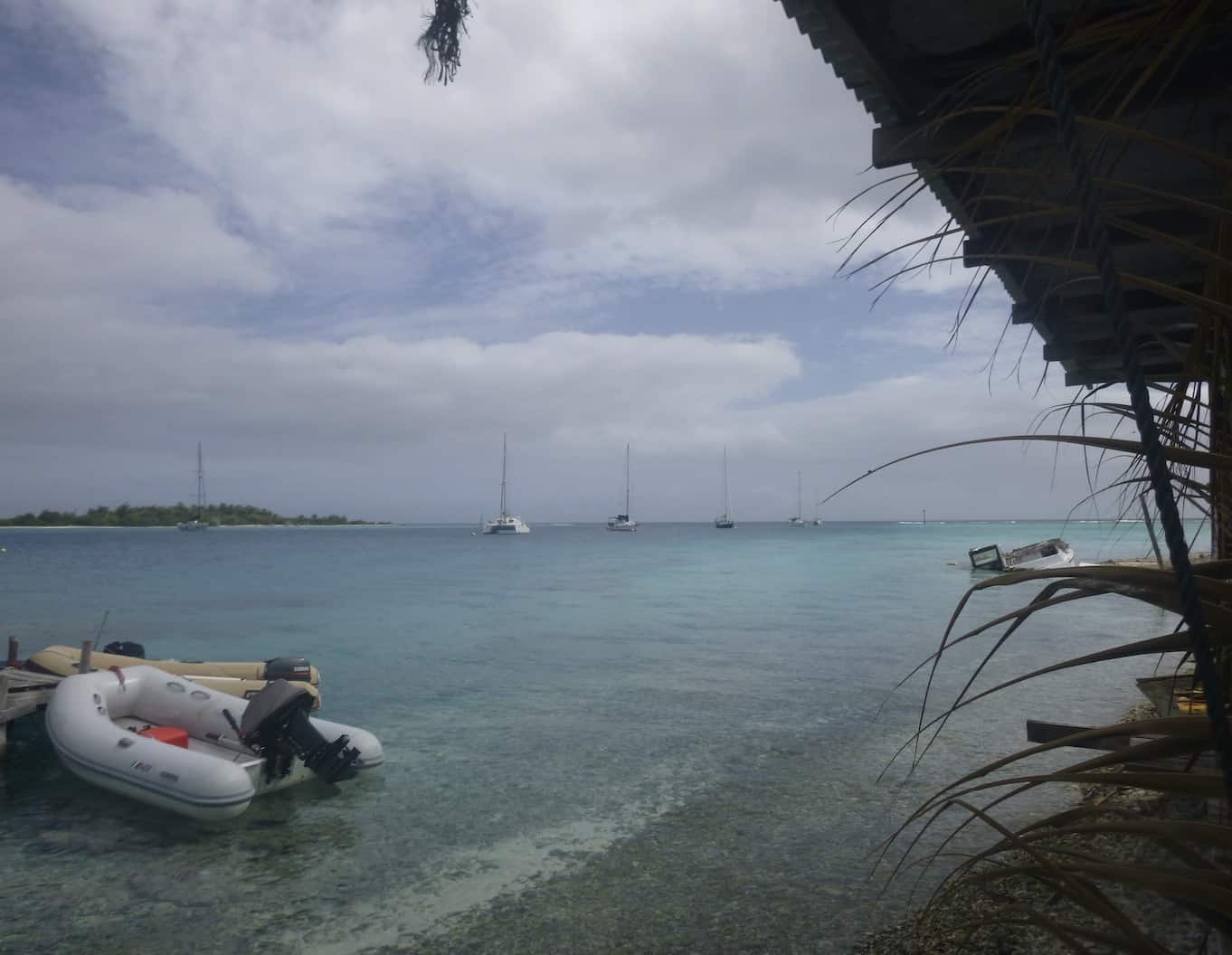
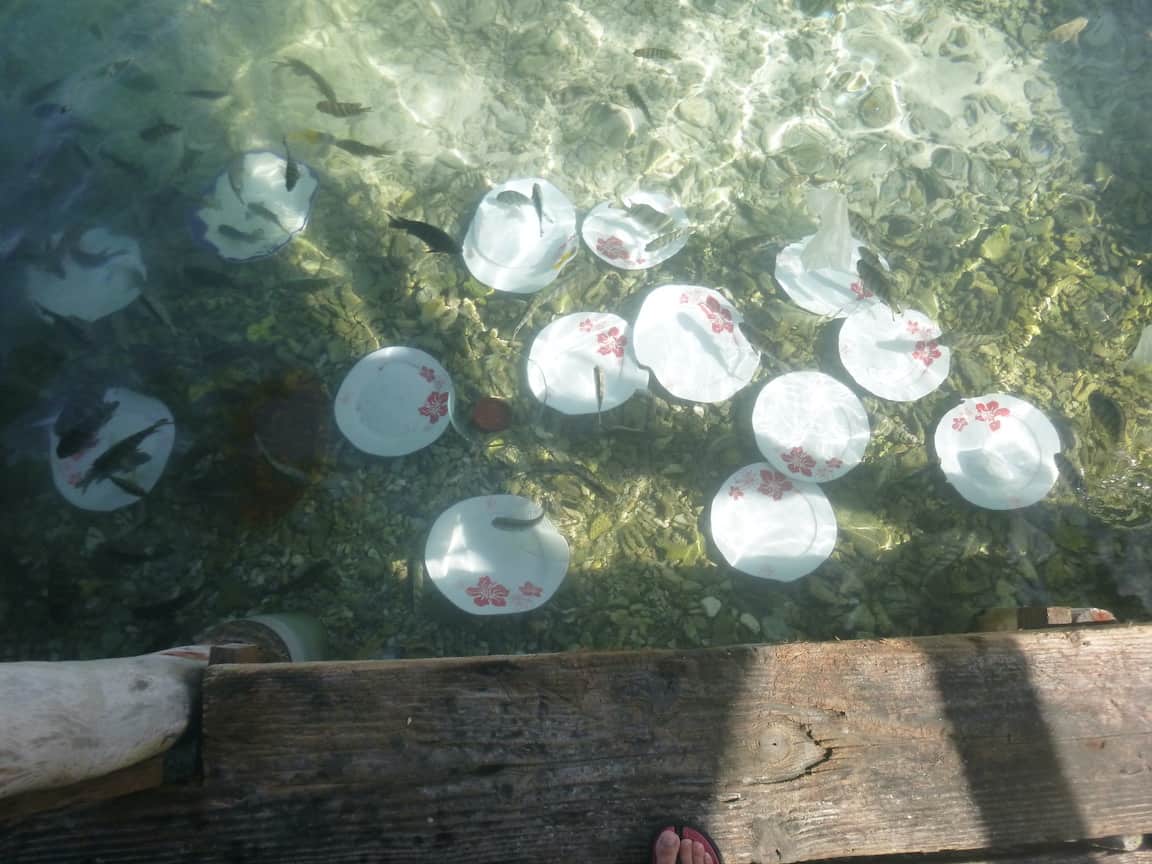

Wow, love reading about your adventures 😃. We miss diving with you. Take care and safe sailing ⛵️. Maybe we can talk soon 😘
Hi,
We love reading about your adventures too! We are looking forward to following your land based ones now that you have sold Papaki.
We are currently in Vanuatu preparing to leave for Australia. Internet at the marina seems good, so fingers crossed we can talk this week.
xx
Looks absolutely idyllic. Bit different from Burton Waters. I mean, we have everything but the reef sharks. We wish!
Enjoy your Pacific adventure and look after those sails.
Hi,
It was a really stunning place, so unspoilt. And just like Burton Waters!!!
Our new sails are performing very well, and we have increased our passage speed by a least a knot. That may not sound much but it is making a big difference to our journey times!
I love tracking you on a map. Great to learn a little of the less famous Pacific Islands! Can’t believe you dived with all those sharks. So many of them. There must be plenty of food for them to be in such big numbers I guess.
Hi,
My geography has improved significantly since travelling!! So many places that I had never heard of before.
The wall of sharks was most definitely a memorable experience.There must have been 100s of them, just hovering in the current. They didn’t take any notice of us …thank goodness.
Heading for Mackay on 14th and then we will be in Australia andNew Zealand until July 2024. We must put some dates in the diary to catch up.
I love the updates. Truly amazing. Stunning photos and you got your eggs 🙂
Hi,
So pleased that you are liking the posts. It is lovely to share our travels and the amazing places that we have visited.
The eggs were brilliant! It is interesting to see how limited supplies are in certain places and yet the food that is prepared is still delicious.